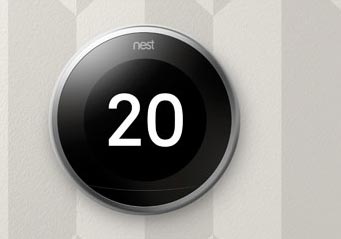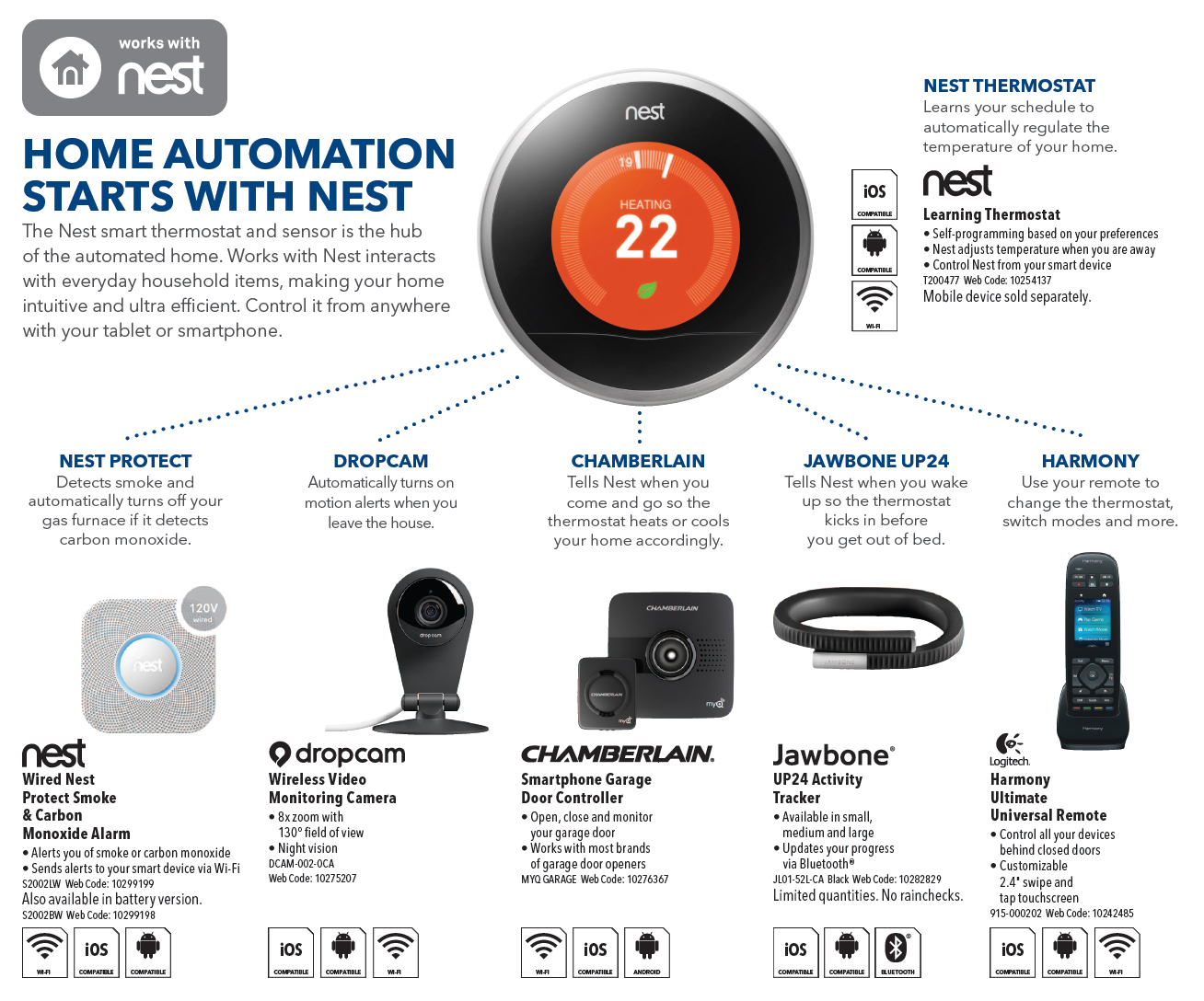 Every Tuesday this month, a different Plug-In blogger has discussed the benefits of smartly choosing your Smarthome Products. Here’s what we’ve covered so far:
Every Tuesday this month, a different Plug-In blogger has discussed the benefits of smartly choosing your Smarthome Products. Here’s what we’ve covered so far:
Choosing Smarthome Products for Security and Access by Raj Patel
Choosing Smarthome Products: Lighting, Plugs and Switches by Stacey MacGregor
Choosing Smarthome Products: Surveillance and Home Monitoring by Erin Lawrence
In the final installment of this 4 part series, we’re going to discuss a topic that should be on the forefront of your minds as we head into this winter: Heating bills. It’s time to discuss using Smarthome technology to leverage Energy and Resource Management.

I spent how much last month?
Managing Energy consumption in the heating season is something we tend to overlook until we receive the bill the next month. I remember how far overboard I went one month many winters ago with keeping my house toasty and ended up paying for it with a single month’s gas bill over $300. If you’ve read my blogs in the past, I’ve mentioned a few times that I live on the West Coast, so there’s really no need for a bill that high! I still forget the odd night (or the odd day when I head to work) to turn the heat off and I end up paying for it. I’ve managed to stop the carelessness somewhat with a Smart Thermostat and I found that in doing so last winter, my gas bills were a lot less than the winter before. Let’s look into how you can make this work for you too.
Before you get started, remember that these products do require some entry level experience with wiring as these products need to be wired into your existing heating systems. In some countries like Australia, you’re required by law to have to hire an electrician to install these devices. While the same doesn’t hold true here in Canada, most heating and electrical companies have experience with these devices and can schedule installation time for you.
The first thing you’ll have to do is select a thermostat that works best for you. Up until a few months ago, you couldn’t really do much unless you had a Forced Air system. This meant that a huge segment of condominium owners or homeowners with electric baseboards were sort of forgotten about. My home has forced air AND electric heat which meant that if I wanted to run the most efficient smarthome-assisted system possible, I could only tend to half of it. Since smart baseboard heating is the new kid on the block, let’s start there.
Managing Electric Baseboard Power Consumption
We can thank Sinopé Technologies for bringing smart electric baseboard thermostats to the forefront in Canada. Their electric baseboard smart heating system is a fairly straightforward setup and installation and communicates amongst itself through a centralized hub and wireless mesh network. If you’re interested in more information, Graham Williams recently reviewed this system when he installed it in his condo.

Perhaps the best feature of all is their reporting functionality. If you’re an analytical person, this is definitely the tool for you. Not only do they report in a handy chart with cost savings and trending of heat consumption but they pull the power savings numbers based on your Postal Code. This means your savings numbers will be as accurate as possible rather than an estimation. The only drawback you may find is that there is no native app support at the moment which means you can’t micromanage things through your phone. You’re currently left to just web based options, though, like Graham, you can simply set up options on your phone to watch and manage your power consumption.
Managing Forced Air Power and/or Gas Consumption
There are numerous smart thermostat options out there for forced air furnaces. However, you’ve got to be careful about your choice. If you have a standard 2-wire heating system without a 24 volt 3rd wire, a lot of models will not work. The trouble here comes in powering the thermostat itself. Forced Air Thermostats are self-sufficient and communicate with your devices directly. The industry leaders don’t use a hub and need their own power source. That’s where the third wire comes in. In a 3 wire system (which is typical when your furnace is a dual heating and air conditioning system,) that third wire will power the thermostat itself. Without it, you’ve got very few options.
If you just so happen to have a 2-wire system like I do, you can look toward thermostats that are battery powered. The
Honeywell Lyric Programmable Wi-Fi Smart Thermostat is what I currently have at home and while I can enjoy its benefits like geofencing and remotely controlling the temperature in my house, it doesn’t really have a sufficient reporting structure behind it to prove that I’m actually saving any money on power. In fact, if this is what interests you the most, I’d give this one a pass.
 Go instead with the
Go instead with the
Nest Learning Wi-Fi Smart Thermostat, which I’ve said time and again is the industry leader. I stand by this statement. In fact, you’re in luck because Nest recently revealed its latest 3rd generation of the popular thermostat. The Nest can also work on two wire systems and is a fair bit smaller and much more intuitive than its counterparts. Nest functions as a learning thermostat. What that means is that Nest adapts to your home space to understand your heating needs. It takes its calculations and analysis of your average day’s heating and can eventually make estimates on your needs. That’s where the savings begin.
Nest estimates that the average user will save 10-12% on their heating bill. I know some of you out there are shaking yours head at the fact that your heating bills may average around $200 a month from October to April. What this means is that at a 12% savings, your Nest will pay for itself in around 2 years. Naturally, you hope it doesn’t come to that (because I admit I enjoyed those way lower heating bills in our warmer winter last year) but it’s something to consider. Savings are communicated to you directly through the reporting features of the Nest app.
Nest also commandeers the Smarthome industry network partnership through its “Works with Nest” program. Here, you’ll be able to control many other smarthome products through the use of the Nest app, or can use multiple devices to control the Nest. Imagine sitting on your couch Chromecasting Netflix while snuggled up in a blanket on the couch. You’re a bit cold and want to turn the heat up, but don’t want to leave your cocoon of warmth. Grab a Logitech Harmony Ultimate Remote and turn the heat up from there. This is just one of the many Works with Nest partners you can use to build your big smarthome network.

It doesn’t stop there either. Nest is also involved heavily in IFTTT (If This Then That)which means that it can partner up with other devices too through the recipe system. You can use this for further energy savings. For example, you can partner your phone’s location settings with Nest to do things like set the thermostat to away mode as you drive away from the house, meaning you can forget to shut the heat off before you leave home and you’ll still save! On the comfort side, you can also make it so that your thermostat communicates with the furnace to warm the home if a sudden cold snap moves in and the temperature dips below a desired number.
Winter doesn’t have to consist of grumbling over the heating bills while wrapping yourself up in blankets to save a few bucks each month. You can still live comfortably and manage your energy consumption thanks to helpful smarthome products like the ones from Nest and Sinopé. All that’s left now is for the snow to fall.
Products discussed in this blog include:

Sinope Smart Thermostat Starter Kit |

Sinope Smart Thermostat |

Nest Wi-Fi Smart Thermostat – 3rd generation |
See more interesting and useful smart home solutions at Best Buy



